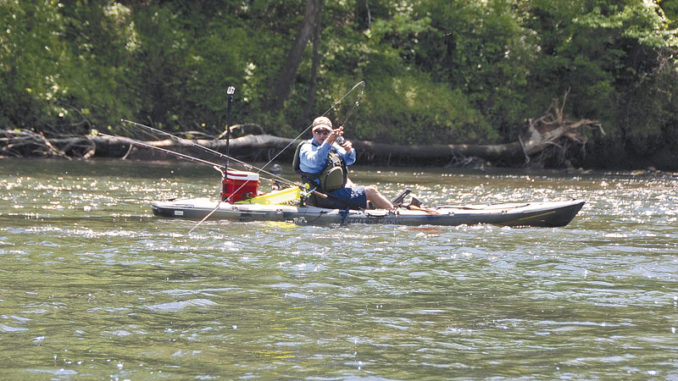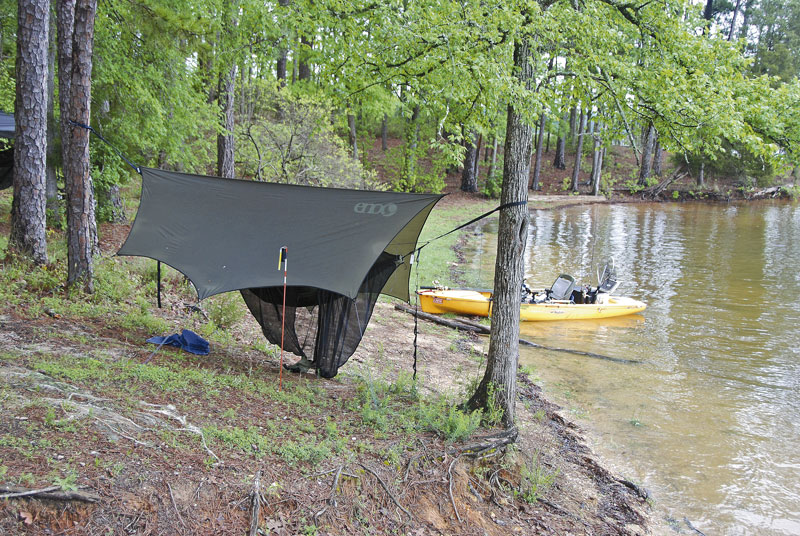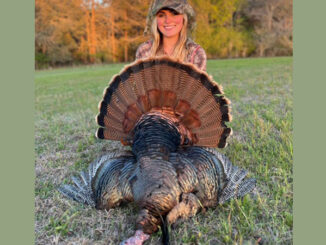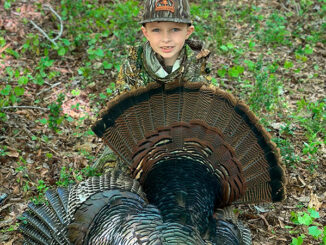
A kayak getaway can make for a memorable fishing experience
Kayaking and kayak fishing finds its appeal, in a large part, by allowing an angler to “get away from it all.”
In many cases, that means getting access to fish that don’t see a bait as often, as well as putting yourself in surroundings well off the beaten path. Kayak float-tripping during the fall accomplishes both of these, often in spades.
Theoretically, float-tripping could take place on any body of water: an inland lake, a stretch of coastline or simply putting in at one end of a pond and paddling to the other. Most common, however, float-tripping involves moving water, like a large creek or river, where it’s easier to go with the flow than float down and paddle back.
Whichever venue you choose, there are a few common factors to keep in mind to make your trip more enjoyable, more productive and safer.
Don’t float alone
Float with a friend or two. The logistics of putting in at one location and taking out at another almost always involves two vehicles. Drop one at the take-out point and head back to the starting point in the second vehicle.
Because the distance in between is no-man’s land as far as any exit is concerned, it’s better to have a buddy in case something goes wrong, be it a small or large calamity.
It’s hard to cover both sides of a river when you’re constantly moving in one direction. Like any fishing grounds, there will be some areas that are more productive than others, and having a companion will help you cover more water and show the fish more presentations. If one of you lands on a hot spot or a hot bait or presentation, you can share information.
Be still
Have a way to anchor. You may float an entire section of water and never encounter the need to fish one spot. But it’s better to have it and not need it than need it and not have it.
The most-effective anchoring system will depend on the topography you are floating. If it’s generally shallow, open water with a sand bottom commonly found in coastal regions, a stake-out pole and anchor trolley may fit the bill. If you’re fishing areas with lots of overhang and/or downed trees along the way, you may anchor with nothing more than a length of rope tied off to a stickup or tree branch. Deep water with current may require more line and a decent-sized anchor to hold the boat in place.
Extra never hurts during extended kayak trips
Be well supplied. Continuing with the thought of no turning back, be sure to supply yourself with enough bait, tackle, food and water to make the trip, plus some in the event the trip goes longer than expected. Make sure those supplies include additional clothing and safety gear in a dry storage container.
Spend a little time planning how to store the additional provisions, since your load may be more than what you are normally accustomed to carrying in your kayak on a non-float trip.
File a float plan. This may sound repetitious and cliché. But let someone besides the other paddlers know where you’re putting in and taking out and how long you expect the trip to take. Your non-kayaking friends or relatives may not be familiar with the waters you’ll be traveling, so a map of your float could save hours of time and effort if someone needs to come look for you.
If you doubt this, go back and rent the movie Deliverance off the internet and watch it.

Estimate float time
If you plan on floating a stretch of water you’ve never floated before, there a few ways to make an accurate assessment of the time it will take.
First, go to an aerial mapping site like Google Earth or one of a myriad of others that allow you to calculate distance and see how far it is from the put-in to the take-out. Make sure you measure all the twists and turns and don’t just measure a straight line.
The average kayaking speed for flowing water is 3 miles per hour. If water levels are low and the flow rate is less, you’ll need to adjust that down to maybe 2 1/2 miles per hour.
The next point in time calculation is obstacles. If there is a low-head dam, shoals or some other obstacle that will require portage, take that into consideration. Some portages are as simple as dragging your boat across a sandbar, while other may require you to take out and go around by road or trail. You might want to reconsider floating such a pathway, but if you do, take along a set of wheels if they make sense.
Consider a sleepover for longer kayak float trips
If you are planning a full-day float trip, you’ll need to include break times along the route. If the trip is half-scenic and half-fishing, you may need to allow additional time.
Finally, you need to calculate the fishing variable. We all know, if we get on a hot bite, catching good fish every cast, we might stay in one place until dark. Short of that, you might consider kayak fishing time on flowing waters at a rate of 1 mile per hour. That may seem fast to some and slow to others, so you’ll definitely need to calculate how you’ll be fishing into that equation.
If it’s primarily a casting artificial baits trip for scattered fish, you may move faster. If it’s a catfishing or anchor-and-fish type trip, the miles don’t go as fast.
Calculate a time variable. This is more important for the people with whom you filed a float plan than yourself. This allows for unforeseen delays or obstacles and may be as short as a half-hour to several hours.
Last, if you have a long stretch of water to cover and don’t want to be in a rush, consider an overnight trip, if such a thing is possible. Floats through public land or that have designated camping areas along the way might be the answer to getting in all the distance and fishing your heart desires.
Best Bets
NORTH CAROLINA
WHAT — Black bass
WHERE — The New River and its tributaries along the North Carolina-Virginia border in Ashe and Alleghany counties.
HOW — Primarily noted as a smallmouth bass fishery, a few largemouth will show up in its lower reaches. Baits will vary depending on the species, but it’s hard to beat a bright- colored trick worm, rigged weightless and weedless, for catching both species.
LAUNCH — https://www.ncwildlife.org/boating/where-to-boat/
INSIDER TIP — Sections along of the New may contain swifter water than some kayak anglers care to navigate. Class I and II rapids are possible, especially in the upper areas. Port these areas unless you’re sure of your boat, skills, and water.
SOUTH CAROLINA
WHAT — Rainbow trout
WHERE — Saluda River
HOW — You can float from the Shoals Park to the Lower Shoals ramp or go even further towards Columbia. There are a number of dump-in sites along the way.
LAUNCH — Saluda Shoals Park or Hope Ferry Ramps, both located a mile or so downstream from the Lake Murray Dam
INSIDER TIP — Don’t overlook tiny “creature” crankbaits for trout fishing in flowing water. Crawfish, grasshopper and frog- imitating baits will catch a lot of trout when worked diagonally across the current, especially at the upper and lower ends of a large pool.





Be the first to comment